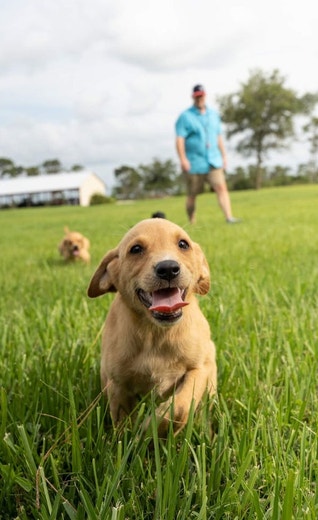
When To Change Your Gun Dog's Diet
FROM THE TEAM EUKANUBA™ BLOG
Featuring RUSS KELLEY, M.S., EUKANUBA AND ROYAL CANIN PET HEALTH AND NUTRITION CENTER
It’s important to match your dog’s diet to the amount of work he’s doing. During hunting season, when he’s running hard, he’s going to need more from his diet. But in the off-season when his workload isn’t as strenuous, he may not need the additional calories. Too much food can pack on weight, and that extra weight makes dogs work harder. In a sense, preseason training should begin with evaluating your dog’s diet.
“Summer training often requires a dietary shift,” says Russ Kelley, Eukanuba™’s Scientific Services Nutritionist. “Off-season maintenance diets are usually lower in protein, fat and calories. In the off-season, many sporting dog owners feed Eukanuba™ Premium Performance 26/16 EXERCISE that is formulated for common activities like daily running. This blend provides balanced nutrition during a low-key off-season without offering excess calories that can lead to weight gain. That diet shifts as preseason preparation for Opening Day begins. As conditioning and training increases, gun dogs should transition to a diet that offers more energy which comes from fat. Many trainers shift to Eukanuba™’s Premium Performance 30/20 SPORT which has higher levels of fat for sustained energy. Transitioning between varying levels of protein and fat is an effective way to match a dog’s diet to the caloric demands of their activities.”
Seven days is all that it technically takes to transition a dog to new food. But it’s a good idea to start making that transition ahead of preseason training provided your dog is at a healthy weight. Slowly incorporate the new food into your dog’s current diet, progressively increasing the amount of the new food over the course of several days until your dog is eating nothing but the new kibble. Gradually introducing the new food into their diet helps cut down on indigestion and loose stool.
Don’t expect to see an immediate change in your dog’s energy, performance, or stamina. “Dietary changes aren’t immediately manifested,” Kelley says. “It will take a dog about four weeks to stabilize from the dietary change and about six weeks for him to reach maximum nutrient absorption.1” It’s important to understand that the amount you feed your dog should reflect their activity level. The transition to a higher level of fat should coincide with an increase in conditioning and training to prime the metabolic pump and train your dog’s body to utilize the higher energy levels in their diet.1
Dogs thrive on routine, so when transitioning from one formula to another it’s important to keep everything else the same. Continue the same feeding schedule. Feed your dog in the same location, and out of the same bowl they are used to. Staying on the same feeding schedule will give your dog a sense of continuity and help him adjust to the new food more easily.
Transitioning diets from off-season maintenance to in-season performance is a seasonal occurrence for many gun dogs. With the right knowledge a gradual switch is a simple process. However, be sure to monitor your dog during the transition. Note their appetite, behavior, and stool quality to determine how the process is going. When in doubt, a veterinarian is the best source of information for your dog’s health and nutrition.




